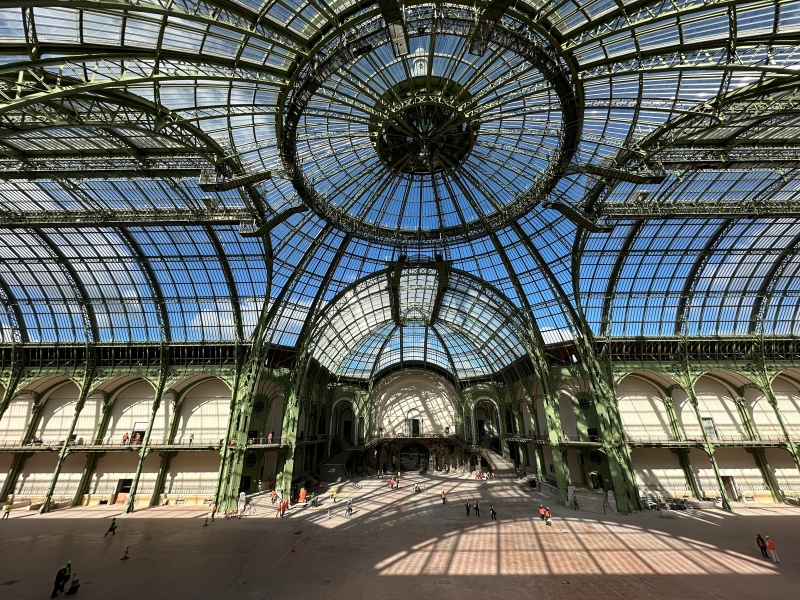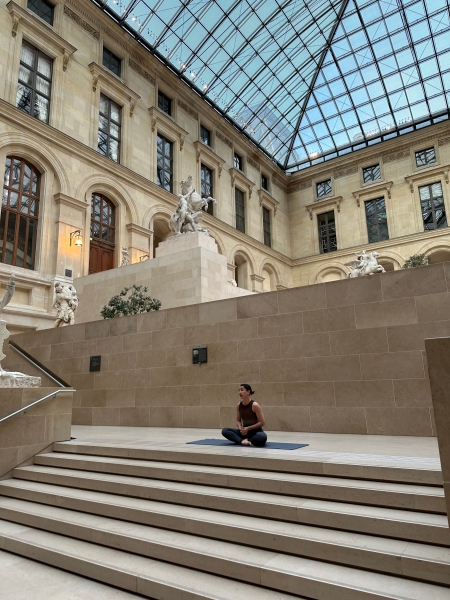
This was no typical tour of the Louvre. The instructions entailed sneakers, athletic attire, and an arrival time of 7:45 am, earlier than the opening of most boulangeries and well before tens of thousands of visitors typically descend on the world’s largest and most popular museum.
Some of us showed up in sweats, others in full-on gym ’fits. I couldn’t resist wearing a hoodie from the museum’s 2021 collaboration with Uniqlo designed by Peter Saville. No one knew what to expect, only that we had secured a spot to Courez au Louvre, a one-hour circuit developed by the accomplished, contemporary dancer and choreographer Mehdi Kerkouche.
Given the 400-plus rooms and nearly 73,000-square meters of floor space, you can cover a lot of ground at the Louvre; but it’s really more of a shuffle, arms clutched at one’s sides. In no world would this count as cardio. I fantasized about running through the Grande Galerie like the three young characters in Jean-Luc Godard’s Band à Part (Band of Outsiders), among the greatest of French New Wave films, minus the clacking shoes.
As we milled about—women noticeably outnumbering men, a wide range of ages—it felt as though I’d been training years and years for something like this. On April 24, 2014, I purchased a membership to the museum. Ever since, I have frequented the various departments the way other people schedule time for the gym (you need only scroll through my Instagram feed to confirm the disproportionately high number of Louvre posts).
Kerkouche was unable to make this session, but we were welcomed by two dancers who would be our guides. Towels and water bottles were allowed; smartphones were left behind. We were there to workout, not to pose with Napoléon. Numbering roughly 60, we were split into two groups and would embark on this rarefied fitness class, overseen by four coaches, from opposite directions.
With spring in her step, Fanny led my group on a light jog to the Cour Marly with its monumental sculptures originating from one the many parks belonging to Louis XIV. Back in 2017, Nicolas Ghesquière staged his first of several Louis Vuitton Louvre runways in the exact spot where we were now doing planks and downward dogs with Laure, a yoga instructor.
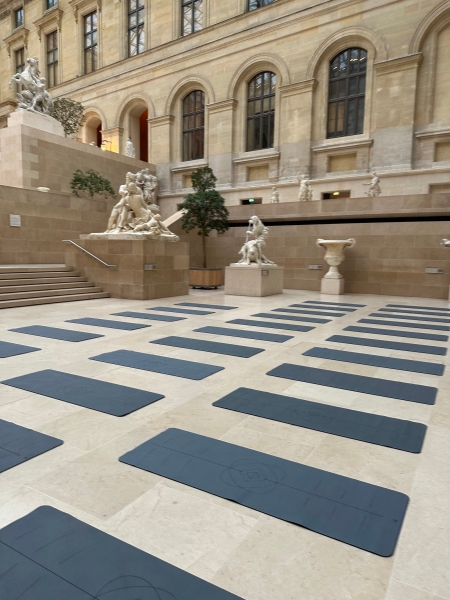
Warmed up, we bounded up a flight of stairs, ran blithely past the Code of Hammurabi, and were met by dancehall pro Queensy Blazin’, who showed us the wine and the Willie Bounce amidst the winged bulls from the ancient palace grounds of Khorsabad. Onward through the subterranean fortification walls of Philippe Auguste’s medieval fortress, we encountered Leo, who put us through “warrior” drills within steps of the Sphinx.
More jogging brought us past the Venus de Milo and into the Salle des Caryatides, the beautiful barrel-ceilinged former banquet hall, where Salim had us doing disco moves while swerving around ancient Greek sculptures. All the while, Sister Nancy, AC/DC, and Michael Jackson blasted through the spaces. Museum agents were yelling “Allez!” and “Courage!” as though we were running a marathon. Hoots and cheers echoed through the halls.
By the end, most of us were breathless and slightly sweaty, on a high of high-brow endorphins. Viviane Cadeau traveled from Orléans the night before. Regularly active and in her mid-60s, she said this was her first time seeing the Venus de Milo.
“It was a crazy experience dancing in Le Louvre,” said Nadège Winter, who is a creative strategist of influence at Chanel Beauty. “Me being a Parisian, I forgot that this place is so precious. And I liked the concept of making people move; movement is a kind of beauty, it’s living.” Would it perhaps be possible to add this… write after the quote from Nadege? And since the focus here was on the activity more than the works, participants were allowed re-entry to the museum so that anyone who wished to continue discovering—the Egyptian mummies or Dutch masters, the Winged Victory of Samothrace (aka the OG Nike), or daresay the Mona Lisa—could do so at their own pace.
Courez au Louvre kicked off last week with 16 sessions staggered through the end of May as part of the museum’s Olympics programming, and it numbers among a larger slate of Paris exhibitions and activities under the banner of an Olympiade Culturelle. The games are still more than two months away, yet institutions that wouldn’t ordinarily seem athletically-inclined are shifting into sport mode.
In fact, the Louvre has also debuted a fascinating and richly-detailed exhibition titled “L’Olympisme” exploring the source material and iconography of the Olympics from ancient to modern times.


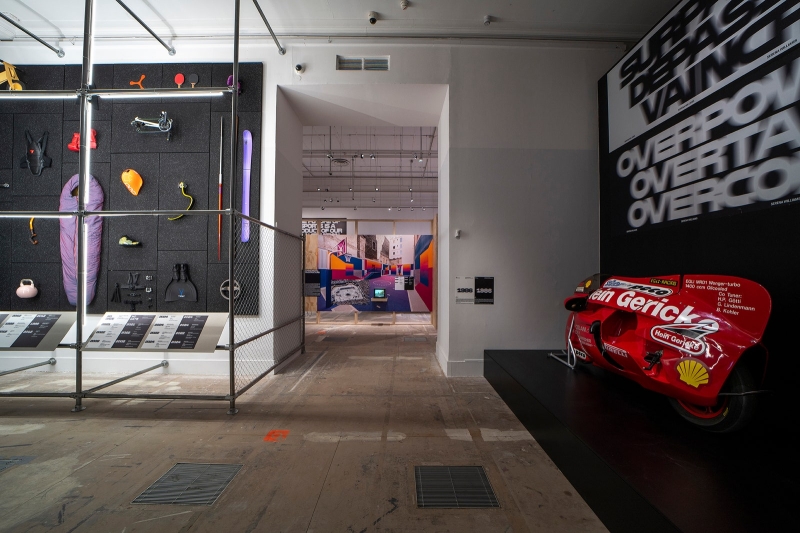
At the Musée du Luxembourg, there’s “Match,” which looks towards the future of design and sport, including innovations in apparel (apparently, the sports bra was conceived from two jock straps sewn together) and equipment (from an Hermès saddle to prosthetic sprinting blades), tech-assisted performance concepts, “data athletes,” drone racing, and more.
The fashion-oriented Palais Galliera has just debuted “Fashion on the Move #2,” a fresh presentation of its archive garments that corresponded to sport, from the earliest women’s riding habits through to tennis and cycling outfits, designer athletic gear (i.e. the Chanel surfboard), and finally a vitrine dedicated to collectable 21st century sneakers.
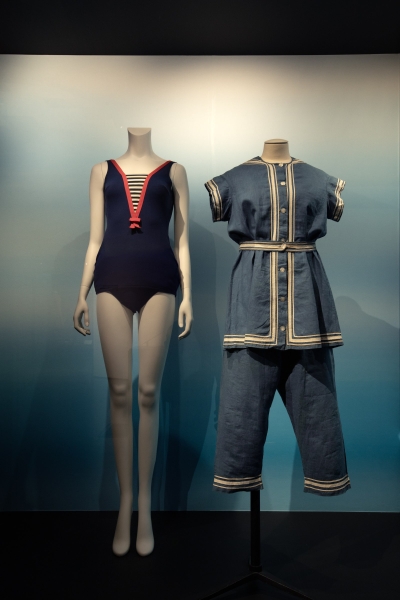
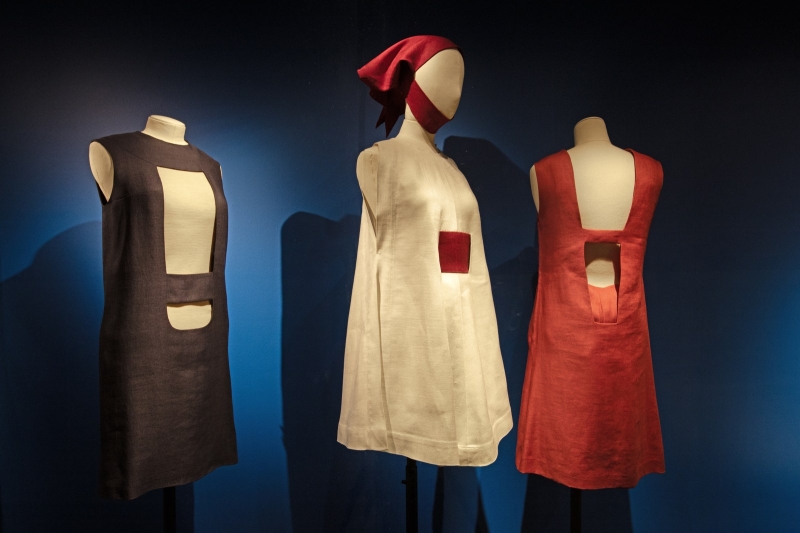
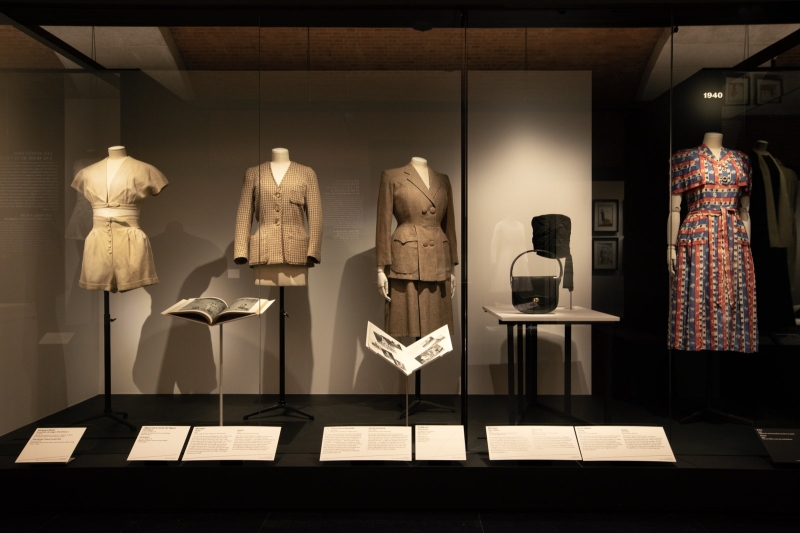
Still, the opportunity to work out within the Louvre is unmatched as an experience and attests to how the people in charge including President Laurence des Cars continue to push boundaries beyond a Beyoncé video or fashion show. Incidentally, at the exact moment I was busting out my dancehall moves, des Cars was on France Inter, the national radio station, telling the host, “at the heart of my mission as president is to better welcome the public.”
A few days later, when I caught up with Kerkouche by phone, he explained that after the museum approached him a year ago, he made several visits and began to envision the circuit like an interactive performance where people would feel “the energy of the museum, the history of it,” he said. “Usually, you don’t get to do any of this in a museum. It’s almost like a luxury.” Every detail—right down to the coherence of the coaches’ clothes in monochromatic tones—factored into the experience, he added, commending the institution for its openness and diverse programming. “It’s great to see the opportunities they give to artists to reimagine the Louvre, and to have people connect in all different ways.”
Even if the remaining sessions for Courez au Louvre are now fully booked (the museum still encourages people to check regularly for openings on its web site), the athleticism-meets-arts ambition of the “Olympiade Culturelle” signals a collective sense of celebrating Paris’s pivotal role in the modern Olympics. For it was at the Sorbonne University in 1894 that a congress revived the games that would commence in Athens two years later.
Now, marking 100 years since the first Olympics in Paris, and with less than 100 days until the opening ceremony, the grandstands are rising in the Place de la Concorde and the Champ de Mars is being transformed into an arena. I was recently invited to tour the Grand Palais as the multi-year renovations by Chatillon Architectes are nearing the first stage of completion. As Francois Chatillon walked us through all the reconfigurations and infrastructure work, the spectacular nave was as glorious as ever—space will be used for Olympics and Paralympics fencing and taekwondo. Once the games are over, the Chanel show will return to the venue for the first time since 2020, followed by the Paris+ par Art Basel fair soon after.
It’s anyone’s guess what kind of disruptions the games will impose on the city, but the current momentum at the intersection of culture and sport is hard to deny. Whatever its reputation for being an “outdoor museum,” Paris has never been more in movement. If only we could convince the Louvre to offer permanent fitness classes.
